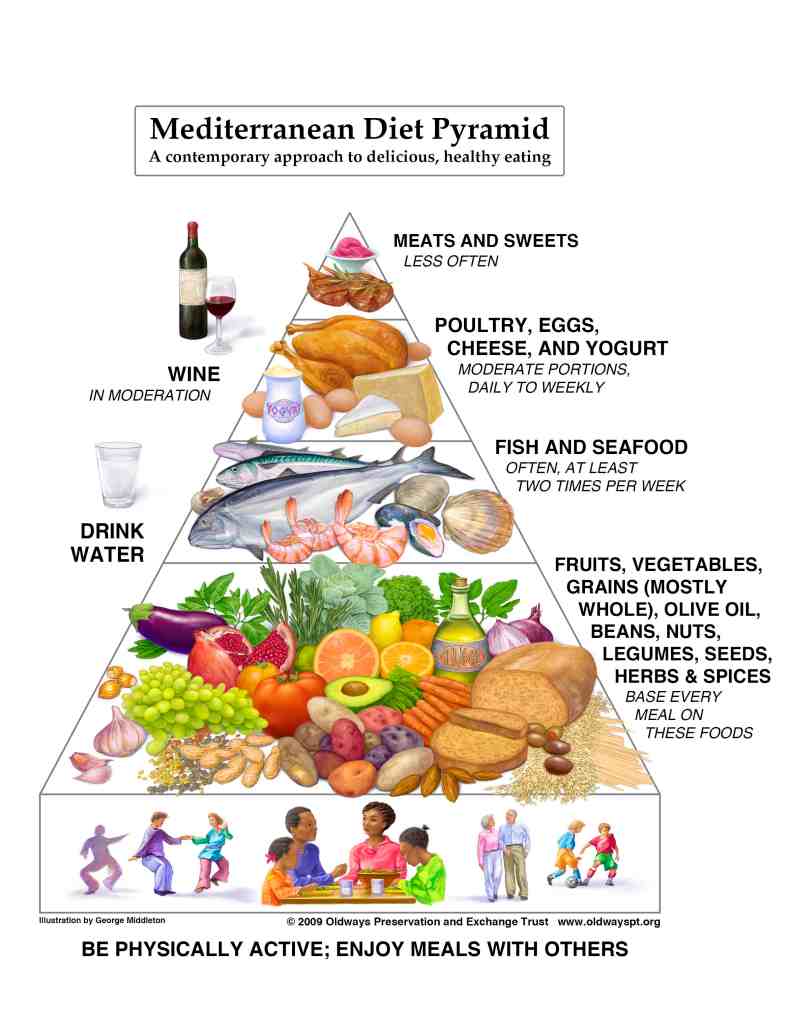This post is based in a recent paper written by Sandra Martín-Peláez, Montse Fito and Olga Castaner and published in Nutrients. Find full text in: https://doi.org/10.3390/nu12082236
At present, approximately 425 million adults suffer from diabetes which caused four million deaths globally in 2017. These figures, which have reached epidemic dimensions, signify that the prevention and treatment of diabetes are currently one of the main objectives of public health policies. Moreover, by 2035, the worldwide prevalence is estimated to affect 592 million individuals (10.1% of the global population). Such a trend has been confirmed by the International Diabetes Federation (IDF) with its own estimation of diabetes affecting 700 million by 2045. There is, therefore, a need for preventive activities to reduce the ongoing progress of this disease and its associated complications. Furthermore, patients with diabetes are considered a vulnerable population due a diversity of comorbidities. Their life expectancy is shortened by approximately six years, in part due to the fact that diabetes doubles the risk of cardiovascular disease and increases the risk of other diseases such as cancer. A meta-analysis published in 2011 studied the associations between diabetes and mortality due to a number of factors including several types of cancer, such as liver, pancreas, ovarium, colorectal, lung, breast, and biliary. In addition, diabetes is associated with cognitive impairment, renal or hepatic failure, mental conditions, digestive diseases, pneumonia, and others. It is also linked to macro- and micro-vascular complications, including diabetic retinopathy, peripheral arteriopathy, renal diabetic disease, and diabetic neuropathy, all of which affect the patient’s health and quality of life.

Diabetes and Lifestyle
The IDF has confirmed that even though the etiology of type 2 diabetes (T2D) is not completely defined, it is known that individuals with overweight, unhealthy diets, sedentarism, and a family history of diabetes have a major risk of developing this condition. Unhealthy lifestyles can promote the presence of diabetes. Therefore, steps to improve them are one of the pillars of its prevention and treatment at pre-illness stages. Research into lifestyle-related behavior regarding the modification of unhealthy diets, and promotion of better dietary patterns associated with a decrease in T2D incidence is therefore extremely relevant. In recent years, a considerable number of studies analyzing the benefits of diet on the incidence of diabetes have been published. The most recent reviews and meta-analyses compare low-fat or low-carbohydrate diets, Mediterranean-type diets, and vegetarian or vegan diets, all of which are considered healthy dietary patterns compared to western, cafeteria-based ones or those that do not integrate any type of intervention. As a novelty, recent studies have also assessed other types of interventions such as mobile applications and cooking workshops.
Mediterranean Diet Lifestyle
The traditional Mediterranean diet is characterized by cooking seasonal and local products, and enjoying socialization with meals. It consists of a daily abundance of vegetables, a variety of minimally processed whole grain bread, and other cereals and legumes as the staple food, nuts and seeds, fresh fruit as the typical daily dessert; sweets based on nuts, olive oil, and honey consumed only during celebratory occasions; cold pressed extra-virgin olive oil (EVOO), nuts and seeds as the principal source of fat; a low to moderate consumption of dairy products (mainly local cheese and yogurt) consumed in low amounts; a moderate consumption of fish, poultry, and eggs, a low consumption of red meat (once a week approximately), and a moderate consumption of wine, normally with meals.

There is consistent evidence regarding the inverse association between the adherence to a Mediterranean diet and incidence of T2D. In addition, some evidence of the association between DASH diet and T2D exists. Furthermore, the Mediterranean diet has been shown to decrease HbA1c levels compared to a control group (such as low-fat diet and low-carbohydrate diet). On the other hand, vegan and low glycemic index diets also improve HbA1c levels.
To sum up, each component of the Mediterranean diet could be involved in processes related to diabetes homeostasis, many of them sharing common physio-pathological pathways. The Mediterranean diet adherence could play a role on T2D-related mechanisms, such as anti-inflammatory/antioxidant actions, glucagon-like peptide agonist compounds, and changes in gut microbiota. Overall, single actions from different nutrients and derivative metabolites could be enhanced by interactions and synergies that make the Mediterranean diet an invaluable tool in the primary and secondary prevention of diabetes. The importance of this diet within the set of habits of a healthy lifestyle must be emphasized.
Mediterranean Diet and T2D
The current knowledge about the mechanisms developing diabetes indicates that they are varied and interconnected. The main physio-pathological process of T2D is the state of sustained hyperglycemia caused by pancreatic β-cells impaired insulin secretion and/or cell insulin resistance (IR). This signifies that either insulin is not generated in adequate amounts, or it is unable to get glucose into the cells, or both. In any case, the consequences are the dysregulation of carbohydrate, lipid and protein metabolism, and eventually macro- and micro-vascular complications. Proper insulin secretion by β-cells can be influenced by several factors in addition to genetic abnormalities or aging. In this regard, lipotoxicity, glucotoxicity, reactive oxygen stress, activation of inflammatory pathways, IR leading to β-cell stress, and/or the decrease in incretin effect (GPL1 and GIP) on β-cells, amongst others, contribute to β-cell impaired insulin secretion. How cells become resistant to insulin is a major area of research. Currently, it is known that there exist both intrinsic cellular pathways and extrinsic mechanisms. The first include cellular mitochondrial dysfunction, oxidative stress, and endoplasmic reticulum stress. The second comprise adipocyte and fatty acid level alterations and inflammation.

Although T2D is a multifactorial disease which involves genetic and environmental factors, healthy lifestyles, including proper diet, are considered key factors in its development. We will therefore focus on how the Mediterranean diet could play a role in T2D-related mechanisms.
As previously stated, many studies have found a positive effect of the Mediterranean diet on T2D. In order to elucidate which mechanisms are behind these effects it is necessary to examine its characteristics.
The Mediterranean diet is able to reduce central obesity and, in turn, reduce obesity-related chronic diseases such as T2D. In fact, this diet is superior to low-fat ones for long-term weight loss. In addition, it is associated with a more significant improvement of IR in obese individuals when compared to other low-energy dietary approaches. Therefore, the composition of the Mediterranean diet, rather than the calories provided, must play a role on T2D positive effects. Moreover, while the individual effects of the distinct dietary components may be too small to be detected, their additive impact may be large enough to be discerned.

